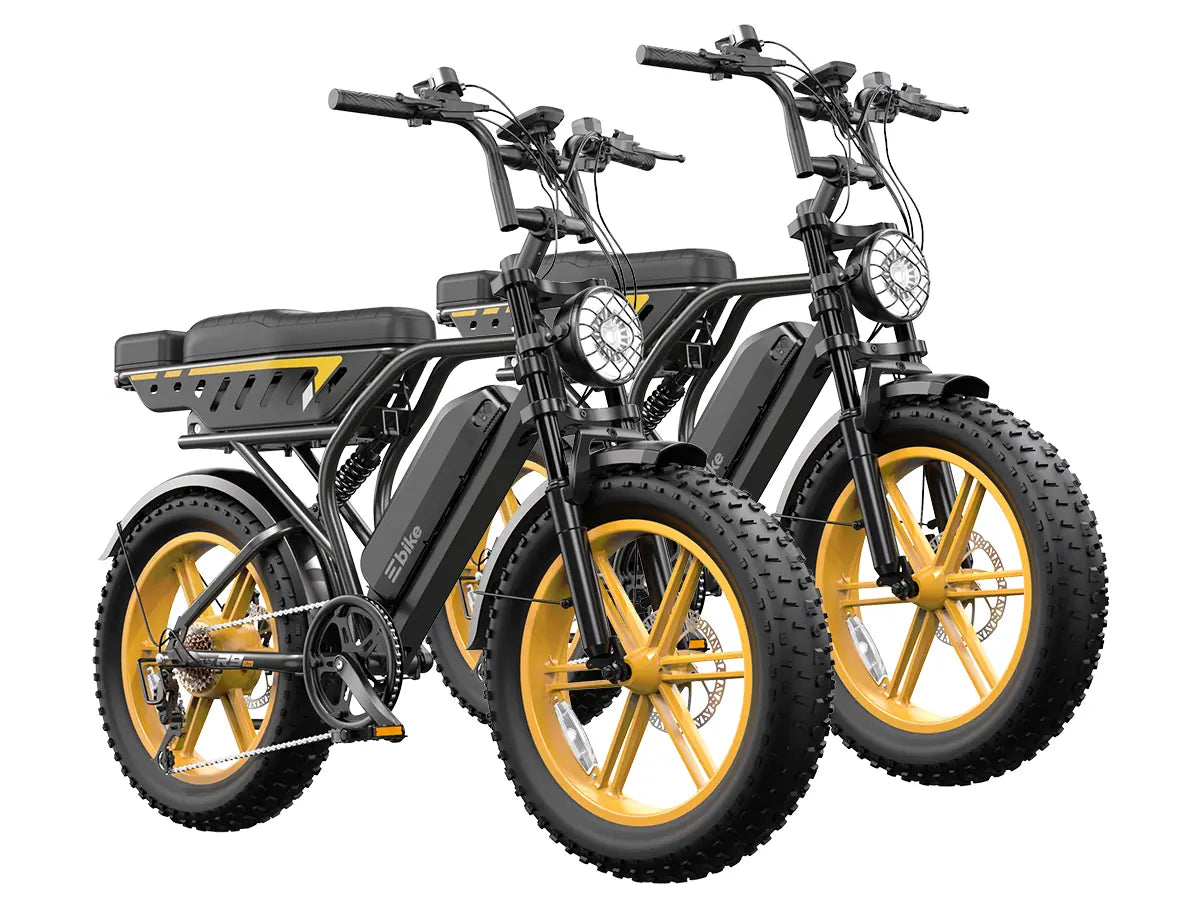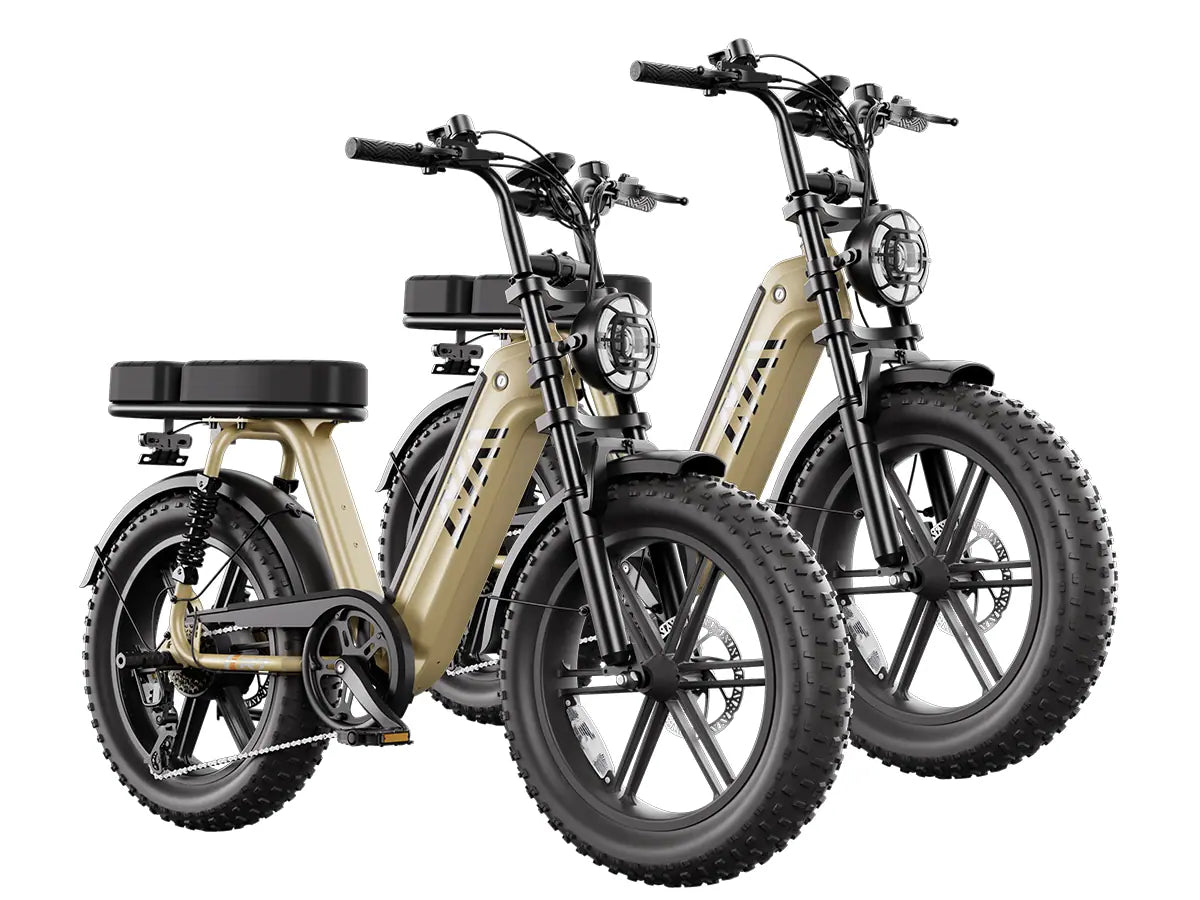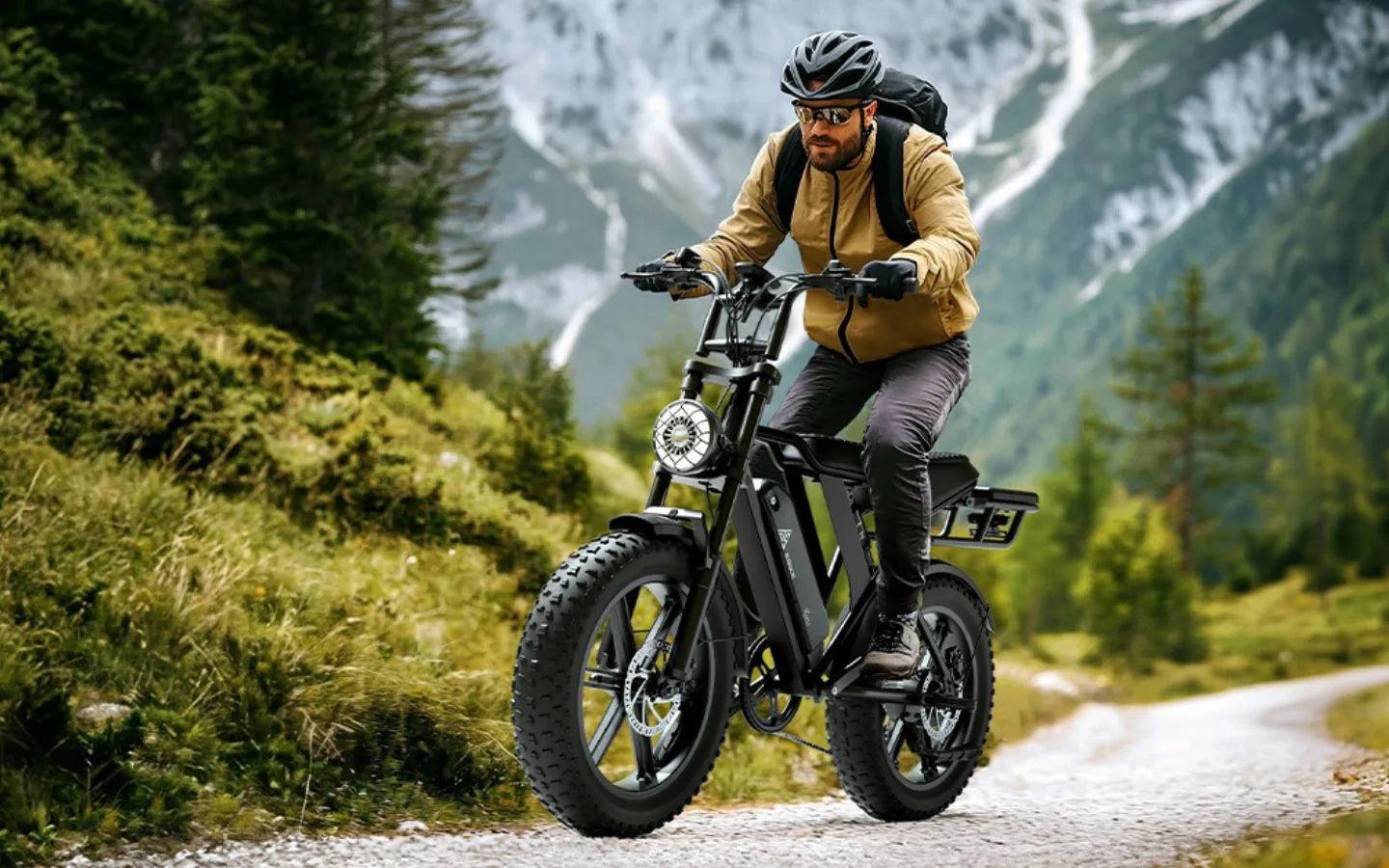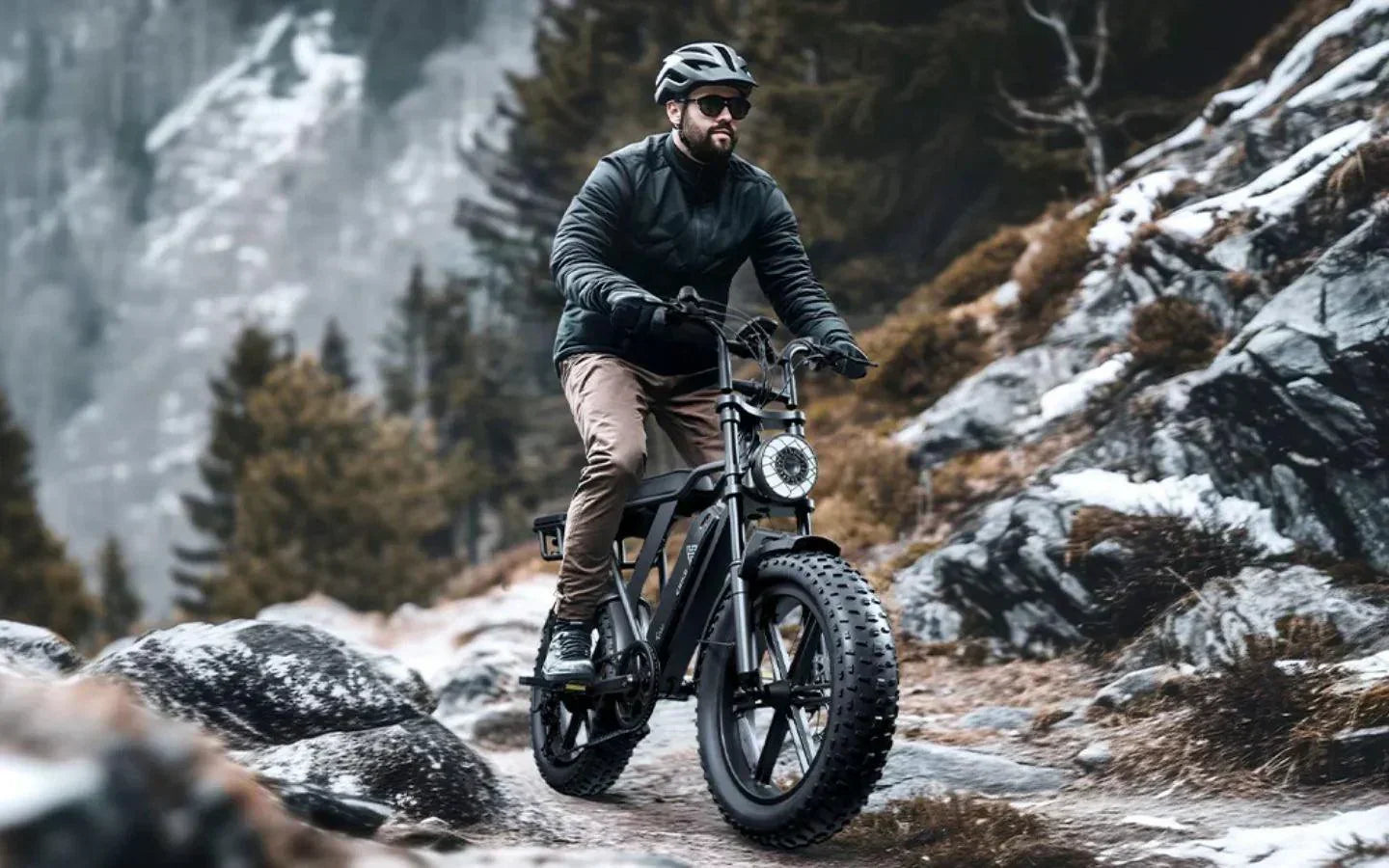Choosing the right ebike pedals is crucial for comfort, efficiency, and safety. Pedals come in flat, clipless, and hybrid types, each suited to different riding styles. Proper installation and regular maintenance, including greasing and inspection, ensure smooth operation and longevity. Models like TST EBike’s 26-inch and 27-inch benefit greatly from quality pedals tailored to their terrain and use. What Is The Best Step Over Ebike For Off Road?
What Types of Ebike Pedals Are Available and Which Suits Your Riding Style?
Ebike pedals come in three main types: flat pedals, clipless pedals, and hybrid pedals. Flat pedals offer ease and comfort for casual riders and commuters. Clipless pedals provide better power transfer and control, ideal for performance and off-road cycling. Hybrid pedals combine both features for versatile use. Choose flat pedals for flexibility, clipless for efficiency, and hybrid if switching between city and trail rides. Match your pedal type to your riding terrain and habits.
Ebike pedals generally fall into three categories:
- Flat Pedals (Platform Pedals): Wide, stable platforms ideal for casual riders, commuters, and off-road adventurers. They work with any shoe and allow quick foot placement, making them beginner-friendly but less efficient for power transfer.
- Clipless Pedals: These secure your feet to the pedals via cleats on cycling shoes, enhancing pedaling efficiency and reducing foot slippage. Best for performance riders, they require practice to clip in and out and are less suited for frequent stop-and-go riding.
- Hybrid Pedals: Combining flat and clipless sides, hybrid pedals offer versatility for riders who want both quick foot placement and efficient pedaling. Slightly heavier, they suit those alternating between casual and performance riding.
Pedal Type Comparison Chart
| Feature | Flat Pedals | Clipless Pedals | Hybrid Pedals |
|---|---|---|---|
| Ease of Use | Excellent | Moderate | Good |
| Pedaling Efficiency | Moderate | High | High |
| Versatility | Very High | Low | High |
| Learning Curve | None | Steep | Moderate |
How Do You Properly Install Ebike Pedals?
To install ebike pedals correctly, identify the left and right pedals—each is threaded differently. Use a pedal wrench or Allen key to tighten them into the crank arms. The right pedal tightens clockwise, while the left pedal tightens counterclockwise. Apply grease to threads before installation to prevent seizing. Make sure pedals are tightened securely but avoid over-tightening. Check alignment to ensure smooth rotation, which helps improve ride quality and extend crank life.
Installing pedals correctly prevents damage and ensures safety:
- Identify Left and Right Pedals: Right pedals have standard threading (clockwise to tighten); left pedals have reverse threading (counterclockwise to tighten).
- Apply Grease: Coat pedal threads with bicycle grease to prevent seizing and ease future removal.
- Thread Pedals Carefully: Align threads and hand-tighten first to avoid cross-threading.
- Tighten Securely: Use a 15mm pedal wrench or appropriate hex key to firmly tighten pedals, but avoid over-tightening.
- Double-Check: Confirm pedals are snug before riding.
Proper installation is essential for all TST EBike models, including the 26-inch and 27-inch, to maintain performance and safety.
What Maintenance Practices Keep Ebike Pedals in Top Condition?
Regular pedal maintenance includes cleaning, lubrication, and tightness checks. Wipe off dirt and grime after wet or dusty rides. Use a light grease or lubricant on pedal threads and bearings every few months. Check for any looseness in pedal axles or crank arms and tighten if necessary. Inspect for cracks or worn-out treads to ensure safety. Proper care not only enhances performance but also prolongs pedal and crankset lifespan over time.
Regular pedal maintenance includes:
- Cleaning: Remove dirt and debris to prevent slippage and wear.
- Lubrication: Grease pedal threads annually to avoid corrosion and seizing.
- Bearing Inspection: Check for smooth rotation; disassemble and regrease or replace bearings if needed.
- Tightness Check: Ensure pedals remain securely fastened to prevent damage to crank arms.
- Wear Assessment: Replace pedals showing excessive wear, wobble, or damaged grip pins.
Consistent maintenance extends pedal lifespan and enhances riding comfort on TST EBike’s robust frames.
Which Pedal Types Are Best for TST EBike’s 26-inch and 27-inch Models?
For TST EBike’s 26-inch and 27-inch models, flat platform pedals are ideal for daily commuting and general use, offering stability and comfort. Riders tackling light trails or uneven terrain may prefer hybrid pedals, which provide both grip and optional cleat use. Clipless pedals can be added for experienced cyclists seeking better power transfer. Overall, platform pedals are best for casual and urban use, while hybrid types suit varied, all-weather riding.
- 26-inch TST EBike Model: Suited for rough terrains like snow and sand, this model pairs well with flat or hybrid pedals that offer stability and quick foot release on variable surfaces.
- 27-inch TST EBike Model: Ideal for commuting and mountain biking, clipless or hybrid pedals maximize pedaling efficiency and control on mixed terrain.
Choosing the right pedal complements each model’s design and intended use, enhancing overall ride quality.
TST EBike Pedal Compatibility Chart
| Model | Recommended Pedal Type | Terrain Suitability |
|---|---|---|
| 26-inch Model | Flat or Hybrid | Rough, off-road terrains |
| 27-inch Model | Clipless or Hybrid | Commuting, mountain biking |
Why Is Greasing Pedal Threads Critical?
Greasing pedal threads prevents metal-on-metal binding, corrosion, and seizing inside crank arms, especially important for aluminum or steel cranksets exposed to moisture and dirt. Proper lubrication simplifies installation and removal, protects crank arm threads, and reduces maintenance hassles.
Buying Tips
When purchasing ebike pedals, consider:
- Riding Style: Flat pedals for casual or off-road, clipless for performance, hybrid for versatility.
- Compatibility: Ensure pedal threading matches crank arms; TST EBike models use standard 9/16” threads.
- Material and Durability: Look for corrosion-resistant materials and quality bearings.
- Ease of Maintenance: Choose pedals with accessible bearings or sealed units based on your comfort with upkeep.
- Test Comfort and Grip: Pedals should feel secure and comfortable with your footwear.
- Brand Reliability: TST EBike pedals complement their 26-inch and 27-inch models, ensuring quality and performance.
Why Ebike Pedals Matter More Than You Think
Ebike pedals are crucial for control, comfort, and efficiency. They influence power transfer and riding posture, enhancing the overall cycling experience. Selecting the right pedals can improve safety and enjoyment on various terrains.
Your ebike's pedals are more than just footrests—they dictate your comfort, efficiency, and even safety while riding. The right pedals can make your journey smoother, while the wrong ones? Well, let’s just say they could turn a joyride into a struggle.
Whether you're upgrading, replacing, or just curious about what suits you best, this guide covers everything from pedal types to maintenance tips, ensuring you make an informed choice.
Types of Ebike Pedals: Finding Your Perfect Match
Ebike pedals come in three main types: flat (platform) pedals for casual riding, clipless pedals for efficient power transfer, and hybrid (duo) pedals offering versatility. Choosing the right type depends on your riding style and preferences.
Pedals come in various styles, and choosing the right one depends on your riding habits. Here’s a breakdown of the most popular types:
1. Flat Pedals (Platform Pedals)
Best for: Casual riders, commuters, and off-road adventurers.
-
Wide, stable platform—ideal for riders who want quick foot placement.
-
Works with any type of shoe (no special footwear required).
-
Easy to get on and off the bike, making it a safe option for beginners.
-
Not as efficient as clip-in pedals for power transfer.
2. Clipless Pedals (Yes, they actually clip in!)
Best for: Performance riders and those seeking efficiency.
-
Secures your feet to the pedals using cleats on cycling shoes.
-
Increases pedaling efficiency and reduces foot slippage.
-
Requires a learning curve—clipping in and out takes practice.
-
Not ideal for frequent stop-and-go riding.
3. Hybrid Pedals (Dual-Sided Pedals)
Best for: Versatile riders who want both options.
-
One side is flat; the other side has a clip-in mechanism.
-
Perfect for riders who alternate between casual and performance riding.
-
Slightly heavier than single-purpose pedals.
Comparison Table: Which Pedal is Right for You?
| Feature | Flat Pedals | Clipless Pedals | Hybrid Pedals |
|---|---|---|---|
| Ease of Use | ⭐⭐⭐⭐⭐ | ⭐⭐ | ⭐⭐⭐ |
| Efficiency | ⭐⭐⭐ | ⭐⭐⭐⭐⭐ | ⭐⭐⭐⭐ |
| Versatility | ⭐⭐⭐⭐⭐ | ⭐ | ⭐⭐⭐⭐⭐ |
| Learning Curve | ⭐ | ⭐⭐⭐⭐⭐ | ⭐⭐⭐ |
How to Replace Your Ebike Pedals (Step-by-Step)
To replace ebike pedals: identify left and right pedals, use a wrench to unscrew them (left pedal is reverse-threaded), clean threads, apply grease, and screw in new pedals securely. Ensure proper alignment to avoid cross-threading.
Switching out your pedals is easier than you think! Here’s a simple guide to help you do it yourself:
What You’ll Need:
-
15mm pedal wrench (or hex key for some pedals)
-
Grease (to prevent seizing)
-
A steady surface to work on
Removing the Old Pedals:
-
Identify the Right & Left Pedal: The right pedal (drive side) has a standard thread, while the left pedal has a reverse thread.
-
Loosen the Pedals:
-
Right pedal: Turn counterclockwise to loosen.
-
Left pedal: Turn clockwise to loosen.
-
-
Unscrew by Hand: Once loosened, spin them off by hand.
Installing the New Pedals:
-
Apply Grease: This helps prevent rust and makes future removal easier.
-
Thread the Pedals in:
-
Right pedal: Turn clockwise to tighten.
-
Left pedal: Turn counterclockwise to tighten.
-
-
Tighten Securely: Use your wrench to ensure they are snug, but don’t overtighten.
Pro Tip: Always double-check that your pedals are secure before heading out for a ride!
Keeping Your Pedals in Top Shape
Regular maintenance of ebike pedals includes cleaning, lubricating moving parts, and checking for wear or damage. Proper care ensures optimal performance and extends pedal lifespan.
Your pedals take a beating over time, so regular maintenance is key. Here’s how to keep them in prime condition:
✔ Clean them regularly—Dirt and debris can cause slippage and wear.
✔ Check for loose screws—Loose pedals can damage your crank arms.
✔ Lubricate the threads—A little grease goes a long way in preventing seizing.
✔ Inspect for wear—If your pedals feel wobbly or don’t spin smoothly, it may be time for a replacement.
FAQs: Everything You Need to Know
Q: How often should I replace my ebike pedals?
A: It depends on usage. Heavy riders or off-road cyclists might need replacements every 1-2 years, while casual riders can go longer.
Q: Can I use regular bike pedals on my ebike?
A: Absolutely! As long as they fit your bike’s crank arms, they’ll work just fine.
Q: Are clip-in pedals safe for beginners?
A: They require practice, but once mastered, they can actually enhance control and stability.
Q: How do I know if my pedals are installed correctly?
A: If they spin smoothly and feel secure underfoot, you’re good to go!
Final Thoughts
Your ebike pedals might not be the flashiest component, but they play a huge role in your overall riding experience. Whether you’re after comfort, efficiency, or versatility, choosing the right pedals can make every ride smoother and more enjoyable.
If you're looking to upgrade, explore different pedal types and experiment with what feels best for you. Your feet (and your ride) will thank you!































Leave a comment
All comments are moderated before being published.
This site is protected by hCaptcha and the hCaptcha Privacy Policy and Terms of Service apply.